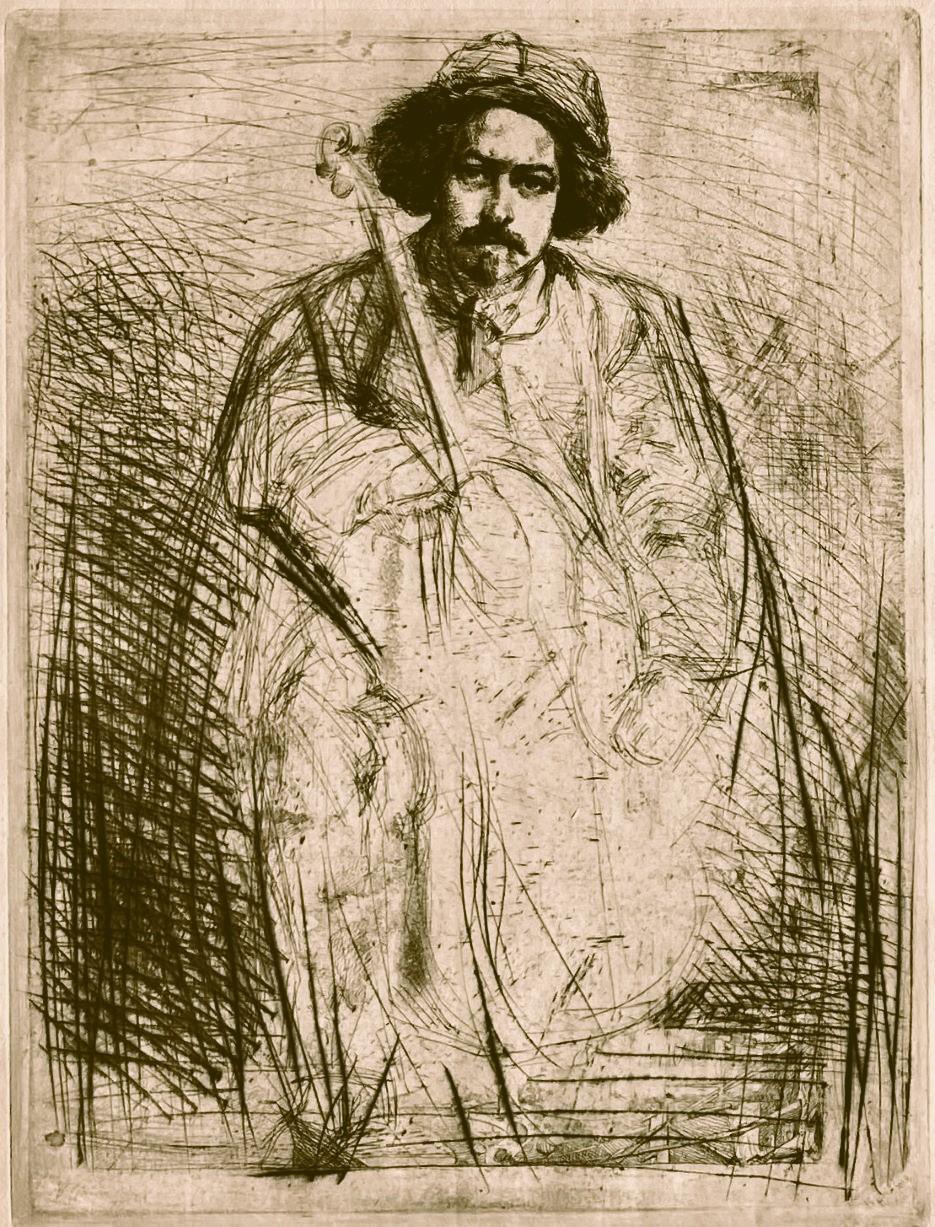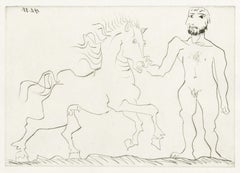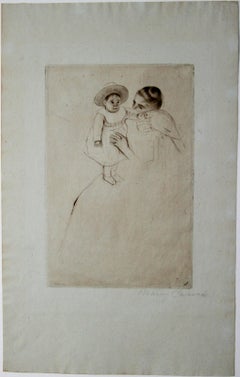Questions & Answers
Our trusted network of 1stDibs sellers answer common questions
What is the difference between drypoint and engraving?
1 Answer

The difference between drypoint and engraving is that these two types of prints involve different techniques. An engraving is a print made by incising lines into a metal plate with a sharp tool called a burin. After the image is drawn, the plate is inked, wiped clean, and then firmly pressed to paper so the ink remaining in the incised grooves is transferred. Considerable force is required to mark the metal, so the lines made by engraving tend to be stronger than those made through etching and characterized by gentle tapering. Light and shade have to be created through cross-hatching since the technique is line-based. Drypoint is similar to engraving in that an artist incises a metal plate with a sharp tool. As the metal is carved, metal shavings, also called the burr, build up in the grooves. But unlike with engraving, the burr is not cleaned away with drypoint, resulting in very soft, velvety lines. Since the burr slowly wears away with each printing, fewer impressions can be made, and the first impression tends to be stronger than the last, a characteristic that sets the technique apart from many other printing methods. Explore a selection of engravings and drypoint prints on 1stDibs.
1stDibs ExpertOctober 7, 2024
Related Questions
- How do wood engravings differ from woodcuts?1 Answer
- What is the difference between a chest and a trunk?1 Answer
- What is the difference between a pergola and a pagoda?1 Answer
- What is the difference between acrylic and Lucite?1 Answer
- What is the difference between a fedora and a Borsalino?1 Answer
Shop for Drypoint Prints and Multiples on 1stDibs
Notre-Dame Cathedral from the Seine
Located in Middletown, NY
Etching with drypoint on cream wove paper, 7 x 8 3/4 inches (177 x 223 mm); sheet 10 1/2 x 11 3/4 inches (267 x 300 mm), full margins. Signed V. E. Chapel and numbered 62/250 in penc...
Category
Early 20th Century French School Landscape Prints
Materials
Etching, Drypoint
Homme Nu Debout avec un Cheval
Located in Fairlawn, OH
One of only a handful of etchings done in the style of the painting Guernica.
from 1937, one the artist's most famous works.
Homme Nu Debout avec un Cheval
Drypoint, 1938
Unsigned (...
Category
1930s French School Nude Prints
Materials
Drypoint
Hélène of Septeuil (enfant au perroquet) (child with a parakeet).
By Mary Cassatt
Located in Storrs, CT
Hélène of Septeuil (enfant au perroquet) (child with a parakeet). c. 1889-1890. Drypoint. Breeskin, 134.v. 9 3/8 x 6 1/4 (sheet 15 3/4 x 9 7/8). A rich impression with burr and plate...
Category
19th Century Impressionist Portrait Prints
Materials
Watercolor, Drypoint
$12,000 Sale Price
52% Off
Tourelle, Rue de la Tixéranderie démolie en 1851
Located in Middletown, NY
Etching and drypoint on watermarked Hudelist laid paper, 9 5/8 x 5 inches (245 x 129mm) full margins. Second state (of five) after lettering. A superb condition with a pencil inscrip...
Category
Mid-19th Century French School Landscape Prints
Materials
Laid Paper, Etching, Drypoint
Surrealist Boat (Vaisseau fantome) - Original handsigned etching - (Field #69-7)
Located in Paris, IDF
Salvador DALI
Surrealist Boat (Vaisseau fantome), 1969
Original etching
Handsigned in pencil
Numbered /200
on Rives BFK vellum 58 x 45 cm (c. 23 x 18 in)
REFERENCE :
- Catalog rai...
Category
1960s Surrealist Figurative Prints
Materials
Drypoint
"Un rideau" original drypoint
Located in Henderson, NV
Medium: original etching and drypoint. This impression on wove paper was printed in 1904 and published in Paris by the Revue de l'Art ancien et moderne. Plate size: 6 5/8 x 4 3/4 inc...
Category
Early 1900s Portrait Prints
Materials
Drypoint, Etching


